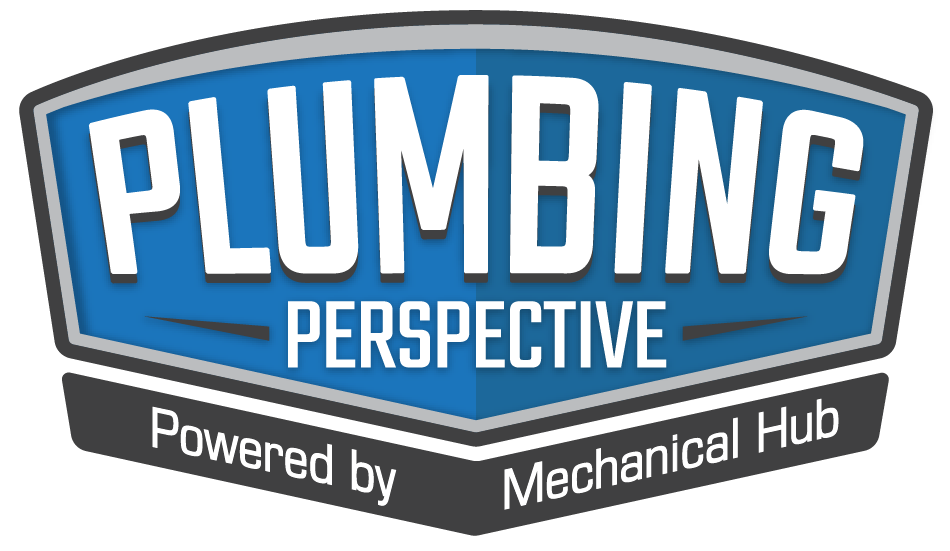We recently asked some of the major players in the phvac markets to give us their feel of how the economy, supply chain, etc. plays out for 2022. We caught up with Bradford White’s Bruce Carnevale, president and CEO, and here are his thoughts on the rest of the year and beyond. MH: We’ve all experienced Read more
water heater
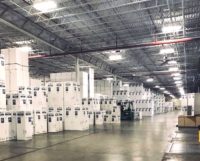
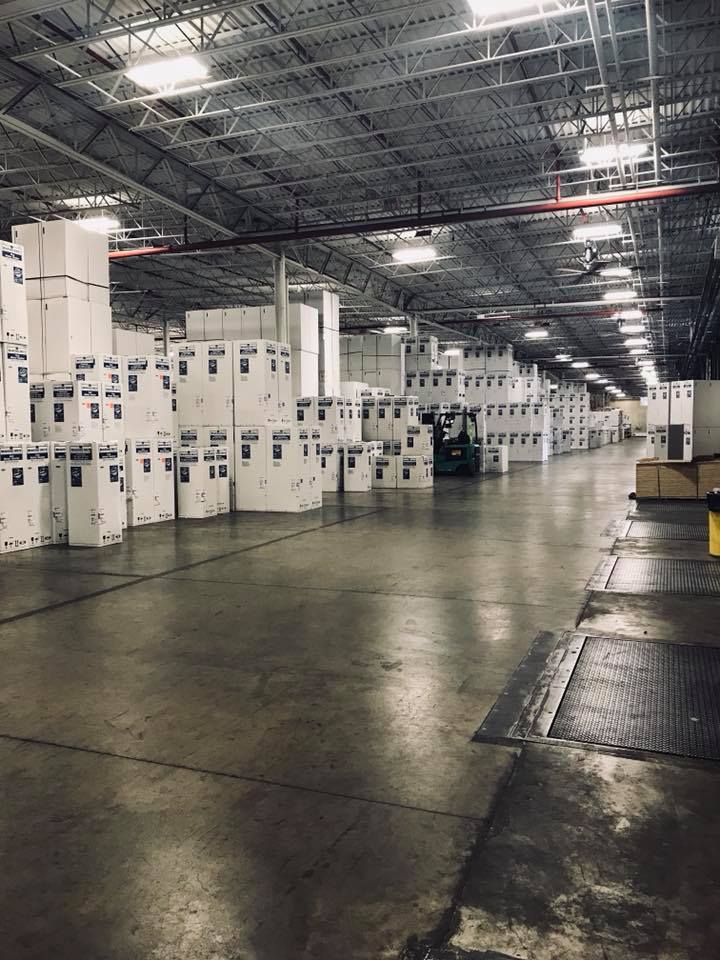 We recently asked some of the major players in the phvac markets to give us their feel of how the economy, supply chain, etc. plays out for 2022. We caught up with Bradford White’s Bruce Carnevale, president and CEO, and here are his thoughts on the rest of the year and beyond.
We recently asked some of the major players in the phvac markets to give us their feel of how the economy, supply chain, etc. plays out for 2022. We caught up with Bradford White’s Bruce Carnevale, president and CEO, and here are his thoughts on the rest of the year and beyond.
MH: We’ve all experienced supply chain shortages, whether it’s industry related or things such as computer chips, plastics, bacon, etc., for example. Do you project a turnaround soon or within the next 6-12 months for certain materials that relate to your specific company?
Carnevale: While the supply chain issues for some materials and components is improving, for others it’s actually getting worse. In the aggregate, I think that supply chain issues will continue to impact our business for most of 2022, and for some components, into 2023.
MH: We are in the midst of some of the highest inflation rates since the early ‘80s. Do you think that higher inflation becomes a “newer normal”? Explain.
Carnevale: No. Inflation is somewhat of a self-correcting problem. One of the many economic indicators we follow is the consumer savings rate, which was at an all-time high during the peak of COVID. It is now back to normal levels, so at some point, prices increase to the point where consumers are no longer willing or able to pay the higher prices. Demand then falls, and that puts downward pressure on prices. This will go back through the supply chain from the consumer to commodities suppliers, and I expect we will see deflation on some products driven by lower material costs. There will, however, be a “new normal” for prices because of increased labor costs. Those costs are very unlikely to adjust downward, and therefore even when commodities adjust, the total costs will still be higher than pre-COVID.
MH: In general, how do you see the economy short-term? Give a few examples of how you draw that conclusion (housing starts, commercial construction, etc.).
Carnevale: I have concerns about the macro-economy for 2022 and 2023 and have had concerns since the beginning of 2021. I don’t see how we can’t have a significant slowdown in the economy with all of the headwinds we are facing: Inflation, rising interest rates, energy prices, labor shortages, global instability, the politics of a mid-term election year, etc. I see the slowdown taking hold going into the second half of 2022.
MH: Where are you seeing signs of positivity, if any?
Carnevale: Clearly COVID cases are falling, and hospitalizations and deaths are significantly lower with Omicron vs. previous variants. There is hope that we are nearing the end of the pandemic phase and entering the endemic phase.
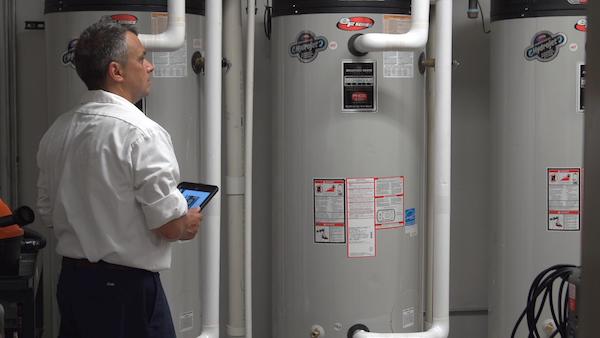
MH: How do you as manufacturers work with customers who are dealing with longer lead times and/or higher prices? Is it a matter of open lines of communication?
Carnevale: Each manufacturer deals with it differently. Our team has communicated very openly with customers when issues arise, or even when we expect issues to arise so that our customers can have the most time and information to make appropriate adjustments in their operations. So, yes, transparent communication is the best way to deal with rapidly changing conditions.
MH: It seems that in today’s employment landscape, it’s hard to find good labor, whether it’s truck drivers, waiters at restaurants, etc. In our industry, how do we continue the fight to highlight the trades as a great career choice?
Carnevale: Very true. The restaurant where I had lunch this afternoon had a sign on their entrance door that read: “Every business is short on labor. Please be kind to those who showed up to work!” That really sums up the current labor environment.
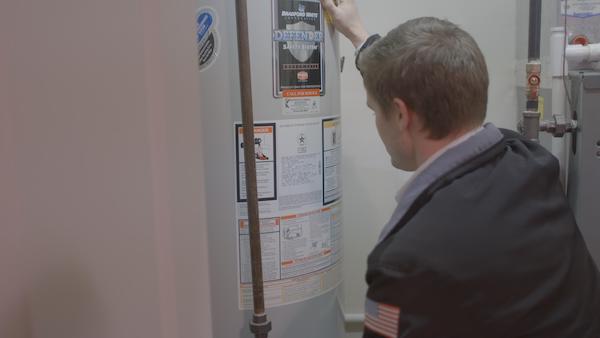
As everyone in our industry knows, the labor shortage was our biggest challenge before COVID, and it will continue to be post-COVID. There are many industry initiatives working to position the trades as a great career choice, and many companies in our industry are working diligently to promote the trades as well. I still believe what we are missing is a well-funded, well-coordinated public/private message with a big voice and a clear message that would connect with younger audiences. While we continue to work towards that, Bradford White will continue our initiatives, and 2022 we will be launching an entirely new foundation designed to promote our industry and attract new people.
MH: In spite of COVID, people must move on. How has your company evolved—or continued to march forward—over the past two years, and talk about any new initiatives, expansions, etc.
You’re right, organizations and individuals must move on. We have found that it is very helpful to shorten the time horizon for goals and objectives, otherwise you can really get bogged down by all the negative things happening all around you. So, whereas you might have had the monthly or quarterly goals, now you have to look at them weekly, or even daily. That doesn’t mean that you don’t still have long term, strategic goals, but rather that you shift more of your focus to just getting through each day or week.
From a business philosophy perspective, we, and I think most organizations are looking at supply chain improvements and diversification. I think some of the important trends will be shortening supply chains by working with suppliers closer to manufacturing operations and reviewing the risks of just-in-time inventory models versus the overall value.

A. O. Smith, a leader in water heater manufacturing, announces the launch of In Our Element, a monthly live talk show. Hosted by A. O. Smith Senior Technical Trainer, Jerry Winslett, the show will highlight news from A. O. Smith, offer service tips, discuss industry topics, answer common product questions and more. “This show will Read more
A. O. Smith, a leader in water heater manufacturing, announces the launch of In Our Element, a monthly live talk show. Hosted by A. O. Smith Senior Technical Trainer, Jerry Winslett, the show will highlight news from A. O. Smith, offer service tips, discuss industry topics, answer common product questions and more.
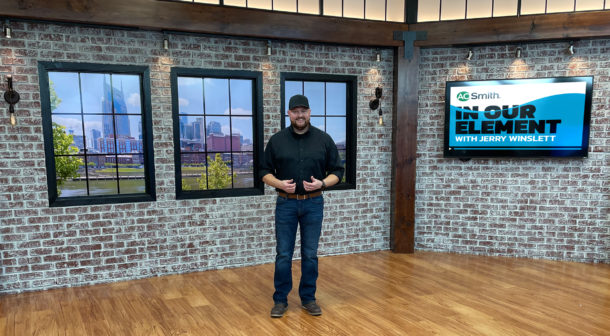
“This show will help us connect with our customers in a new way,” said Winslett. “By providing additional opportunities to expand their knowledge of A. O. Smith products and important industry topics, we’re hoping the show will help them make more informed decisions out in the field.”
In Our Element will premiere on Monday, Feb. 28 at 1 p.m. CST, and will be hosted live on the
A. O. Smith YouTube page. The premiere episode will feature A. O. Smith Marketing Director, Jeff Storie, and will discuss marketing in the water heating industry.
“We’re constantly striving to find new ways to further develop the relationships we have with our customers – especially in a digital format – and we hope this show will do just that,” said Winslett.
Each episode will run roughly 30 minutes and will feature a new topic and guest star. Topics will include industry news, product launches, resources and more. The second episode will run on Friday, March 25 at 1 p.m. CST, and will feature A. O. Smith Technical Trainer, Kenneth Ezzell, who will highlight A. O. Smith University.
Visit the A. O. Smith YouTube page and subscribe to the channel to be notified of future shows and view other content. For more information on A. O. Smith and its products, visit www.hotwater.com.
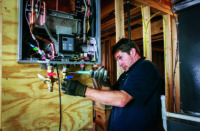
Hydronic heating offers complete, energy-saving system for homeowners When your customers are selecting home appliances, what priorities often drive their decision making? If the answer is cost, comfort, or environmental impact, they may be interested to learn more about hydronic systems, which offer efficient home and hot water heating simultaneously. When it comes to hydronic Read more
Hydronic heating offers complete, energy-saving system for homeowners
When your customers are selecting home appliances, what priorities often drive their decision making? If the answer is cost, comfort, or environmental impact, they may be interested to learn more about hydronic systems, which offer efficient home and hot water heating simultaneously.
When it comes to hydronic heating, there are different options: the hydronic furnace and in-floor hydronic radiant heat, which is most commonly used for homes in cold climates.
Here’s an overview of how one of these systems works and how they can benefit both you and your customers.
What is a hydronic furnace?
Hydronic furnaces connect seamlessly to select tankless water heaters and condensing boilers to deliver efficient, simultaneous home heating and domestic hot water in one complete system. Hydronic furnaces use hot water from a tankless water heater, saving installation costs—and making traditional furnaces seem like a thing of the past. By pairing them with propane-powered water heater, contractors can help their customers enjoy steady, comfortable heat throughout their home.
A propane-powered tankless water heater supplies continuous hot water—unlike a traditional storage tank with a capacity of just 50 or 75 gallons and required time to recover between uses—so the system can pump a constant flow through the heating coil and deliver steady, comfortable heat to the home without the need for a fuel-powered furnace, gas piping or an extra exhaust vent to the atmosphere. At the same time, the tankless water heater performs its primary job without interruption, prioritizing heating the water that is piped to showers, sinks, dishwashers, and washing machines.
These systems can be installed in a new home or added to an existing home and can be paired with an air-source heat pump to maintain comfort and efficiencies—even on cold days when the heat pump can’t keep up. Plus, this does away with the super in-efficient resistant heat coil for the emergency heat mode.
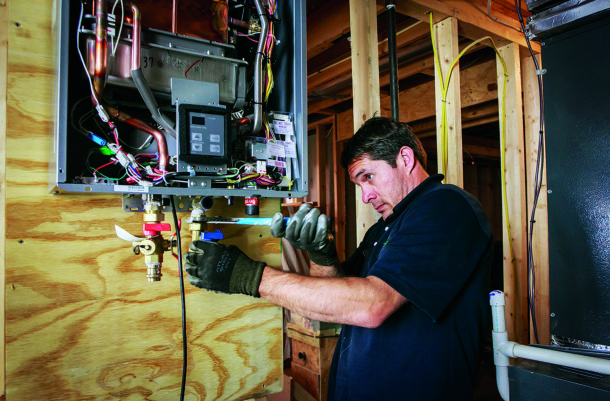
How can this technology benefit my customers?
With a hydronic furnace, homeowners can rely on steady, comfortable heating throughout their home, saving space, energy, and money.
Budget-friendly
A tankless water heater is typically more expensive than a traditional storage tank model, but some manufacturers offer the hydronic air handler for less than a comparable gas-powered condensing furnace. When you combine that with installation savings you end up with a lower cost installed product. Plus, because propane-powered tankless water heaters only heat water when it’s needed, they can help homeowners save more than $150 per year in energy costs when compared with typical electric storage tank water heaters.
Increased comfort and control
Comfort is one of the biggest perks of hydronic heating. In fact, many homeowners report that their heat is less dry than heat radiated via a traditional furnace. With a hydronic furnace, homeowners control the air temperature by setting a thermostat, just as they would with a traditional furnace or heat pump.
Sustainable operation
And for environmentally conscious homeowner customers, they can have peace of mind knowing their system is reducing emissions compared with other energy options. Notably, a propane tankless water heater produces roughly half of the carbon emissions of an electric storage tank system when full lifecycle emissions are taken into consideration. Plus, they’re aiding in water conservation efforts because hydronic systems create no wastewater. Instead, they take the water used to heat the air and recirculate it through the tankless water heater.
How can installing hydronic heating benefit my business?
The benefits of hydronic heating don’t stop with the customer. Plumbing and HVAC contractors can reap the benefits, too. The dual technology presents an opportunity for some plumbers to get into the heating business and some mechanical contractors to add tankless water heater installation to their line of services.
Some industry pros predict that builders will embrace hydronic heating as homebuyers already familiar with the benefits of energy- efficient tankless water heaters learn that those energy- and water-saving devices can also help heat their homes.
Visit Propane.com/Water-Heating to learn more.
 Bryan Cordill is director of residential and commercial business development for the Propane Education & Research Council. He can be reached at bryan.cordill@propane.com.
Bryan Cordill is director of residential and commercial business development for the Propane Education & Research Council. He can be reached at bryan.cordill@propane.com.
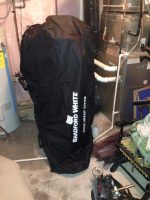
Residential water heaters are often taken for granted. They’re usually installed in a closet or basement or other out-of-the-way spot, and it generally costs less to replace a standard water tank system than other home systems, so many homeowners don’t see water heater maintenance as an urgent priority. But proper maintenance almost always pays off Read more
Residential water heaters are often taken for granted. They’re usually installed in a closet or basement or other out-of-the-way spot, and it generally costs less to replace a standard water tank system than other home systems, so many homeowners don’t see water heater maintenance as an urgent priority.
But proper maintenance almost always pays off in the long run, and not just for homeowners. While contractors may benefit from the additional business generated by emergency service calls, those one-time sales aren’t nearly as important as the name recognition and trust they can cultivate with maintenance agreements that help insure optimal product performance and longevity.
Unfortunately, many water heater service professionals either don’t recognize the value of maintenance plans, or don’t know how to effectively communicate the advantages to their customers.
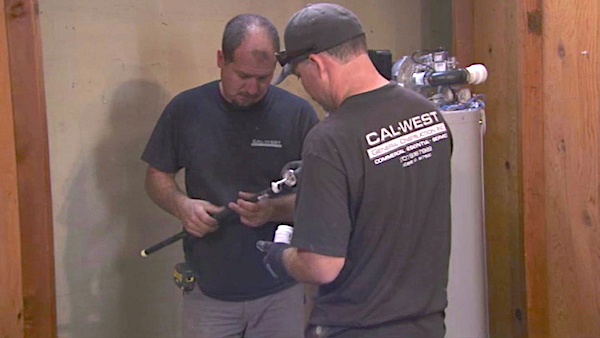
Pay a little now or a lot later
Over the life of an appliance, the minor cost of an annual inspection or tune-up can help save homeowners in multiple ways. Inspections can catch small issues before they become major problems, which in turn helps extend the life of the water heater. In addition, regular service helps ensure efficient performance, which can reduce energy costs and provide for consistent product performance.
Preventive maintenance also helps protect homeowners from the inconvenience and high costs associated with emergency service. Unplanned repairs tend to cost more than regular maintenance and can interrupt household routines, which can be more than a nuisance. Missed work and the disruption of planned events like family vacations can add to the financial burden of emergency water heater repair.
Many successful contractors recognize that it’s in their own interest to help customers avoid emergencies, no matter how lucrative they can be. Routine service calls don’t generate a lot of income, but they build name recognition and, more importantly, lasting relationships. That can be a vital distinction when it’s time to replace an existing water heater, or in the unfortunate event of an emergency.
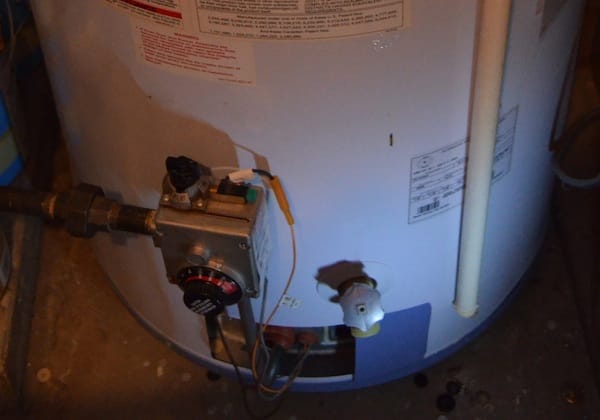
Maintenance vs. warranty
One misconception that contributes significantly to deferred maintenance is not having a full understanding of a manufacturer’s warranty. Many homeowners assume that the warranty will cover most repairs. Why pay for even minor service now if you expect your warranty to cover the cost of major repairs later?
But the scope of a warranty is limited and very specific, covering demonstrable defects in manufacturing. Proper installation and application and, in some cases, even documentation that the recommended maintenance has been performed, are typically required in order to maintain a valid warranty. Even then, warranties typically don’t apply to local conditions that can significantly affect water heater performance, like water quality, climate, air quality and the hardness of the water supply.
A warranty is an important tool that homeowners should be familiar with. But the best warranty will not apply to the simple wear and tear of daily use or issues arising from local adverse conditions.
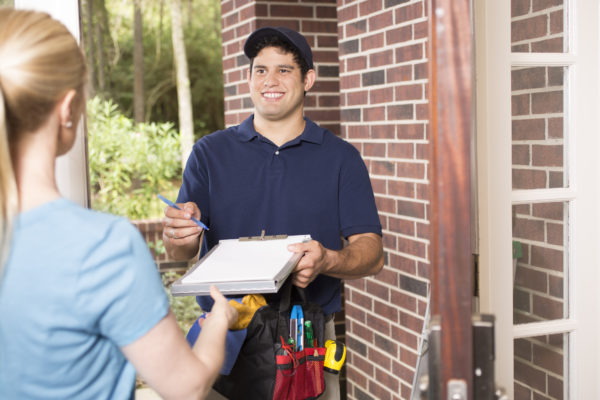
Connect with homeowners
It doesn’t take salesmanship in order to maximize the long-term advantages of maintenance agreements. In many cases, a few simple tweaks to existing workflows can be extraordinarily effective tools to open new opportunities for preventive maintenance.
One simple enhancement is to follow the example of HVAC contractors and leverage seasonality. If water heater use tends to go up in your service area during colder months, try to schedule new maintenance service calls in late summer or fall. Employ multiple seasonal opportunities to connect with customers, from back to school, winter holidays, summer vacation or the switch to Daylight Savings Time, and set up regular seasonal reminders for follow-ups.
The single best time for a maintenance agreement conversation is immediately after a substantial repair or emergency service. Homeowners who have recently experienced the cost and disruption of a major equipment repair or unplanned replacement are in a position to recognize the likely payoff of an investment in ongoing service.
Ultimately, communication is the most crucial tool for connecting with customers about preventive maintenance service. Contractors who can effectively and objectively relay information to homeowners are in a position to relieve the anxiety many of them feel about water heaters and other large home appliances. By educating them and offering a convenient, affordable solution, you can establish your company as the trusted solution for any foreseeable service.
 Dustin Bowerman is director of corporate training and product support for Bradford White Corporation, a full-line manufacturer of residential, commercial and industrial products for water heating, space heating, combination heating and storage applications. For more information, visit www.bradfordwhitecorporation.com.
Dustin Bowerman is director of corporate training and product support for Bradford White Corporation, a full-line manufacturer of residential, commercial and industrial products for water heating, space heating, combination heating and storage applications. For more information, visit www.bradfordwhitecorporation.com.
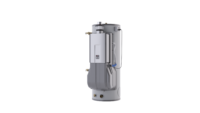
Providing ease, cost savings and strong performance, product offers contractors a competitive advantage To provide a quick and easy tank replacement solution to both contractors and end users, Rinnai America Corporation created the non-condensing Demand Duo® R-Series Commercial Hybrid Water Heating System. Its design connects easily to the existing 6” B-Vent, allowing Contractors to quickly and easily replace standard-efficiency Read more
Providing ease, cost savings and strong performance, product offers contractors a competitive advantage
To provide a quick and easy tank replacement solution to both contractors and end users, Rinnai America Corporation created the non-condensing Demand Duo® R-Series Commercial Hybrid Water Heating System. Its design connects easily to the existing 6” B-Vent, allowing Contractors to quickly and easily replace standard-efficiency atmospheric tanks. The end user, too, can benefit by simply upgrading to a “best of both” system, featuring part-tank and part-tankless design.
“With patented technology, the Demand Duo R-Series delivers superior, reliable performance and a longer service life,” said Dale Schmitz, Marketing Segment Manager. “Switching from traditional tanks to the consistency and efficiency of the Demand Duo R-Series is simple and benefits customers with a lower total cost of ownership.”
Sold in 80 or 119- gallon tank options, the Demand Duo R-Series eliminates the need for new vent penetrations. The pre-installed drip leg and 36” Swivel-Flex Gas Line also creates material efficiencies and reduces install time with a pre-installed electrical junction box and duplex outlet. The digital controller, which comes with the product, also allows management of building recirculation without having to purchase an additional aquastat.
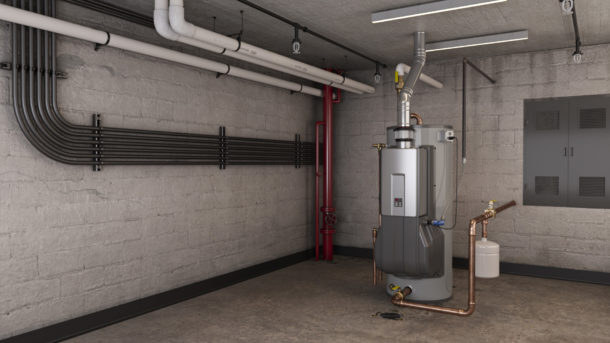
“With cost advantages to the end user, as well as ease of installation, this product gives contractors a great competitive advantage,” said Schmitz. “Rinnai is going one step further and offering an aggressive promotion to encourage Rinnai PROs and installers to try the Demand Duo R-Series, earning them a $150 rebate through June 30, 2021.”
Rinnai’s R-Series originated from the Demand Duo product portfolio; the first commercial hybrid water heating product introduced by Rinnai in 2015. It was developed to compete against high-efficiency tank-type water heaters in emergency replacement situations. Due to water heating inside traditional tanks, those products are put through a higher amount of strain, and that constant heating is what ultimately causes the tank to fail, leading to costly replacements. The Demand Duo was designed to solve this problem, by putting less stress on the tank through water being heated outside the tank in the Demand Duo’s tankless unit. With this solution comes a longer product service life, a longer warranty and more economical repairs.
To continue providing solutions to end users and contractors, Rinnai expanded the product category which now includes multiple tank sizes and Btu inputs including two tankless units mounted to a 119-gallon tank, known as the Demand Duo H-Series, a condensing hybrid water heater.
“Once contractors use the Demand Duo series, they seldom go back to installing tank-type water heaters because they can offer a product that is at the same price point but offers so many more advantages,” said Schmitz. “These advantages end up benefiting both the contractor and customer, while providing reliable performance whenever hot water is needed.”
To learn more about Rinnai, visit www.rinnai.us.
